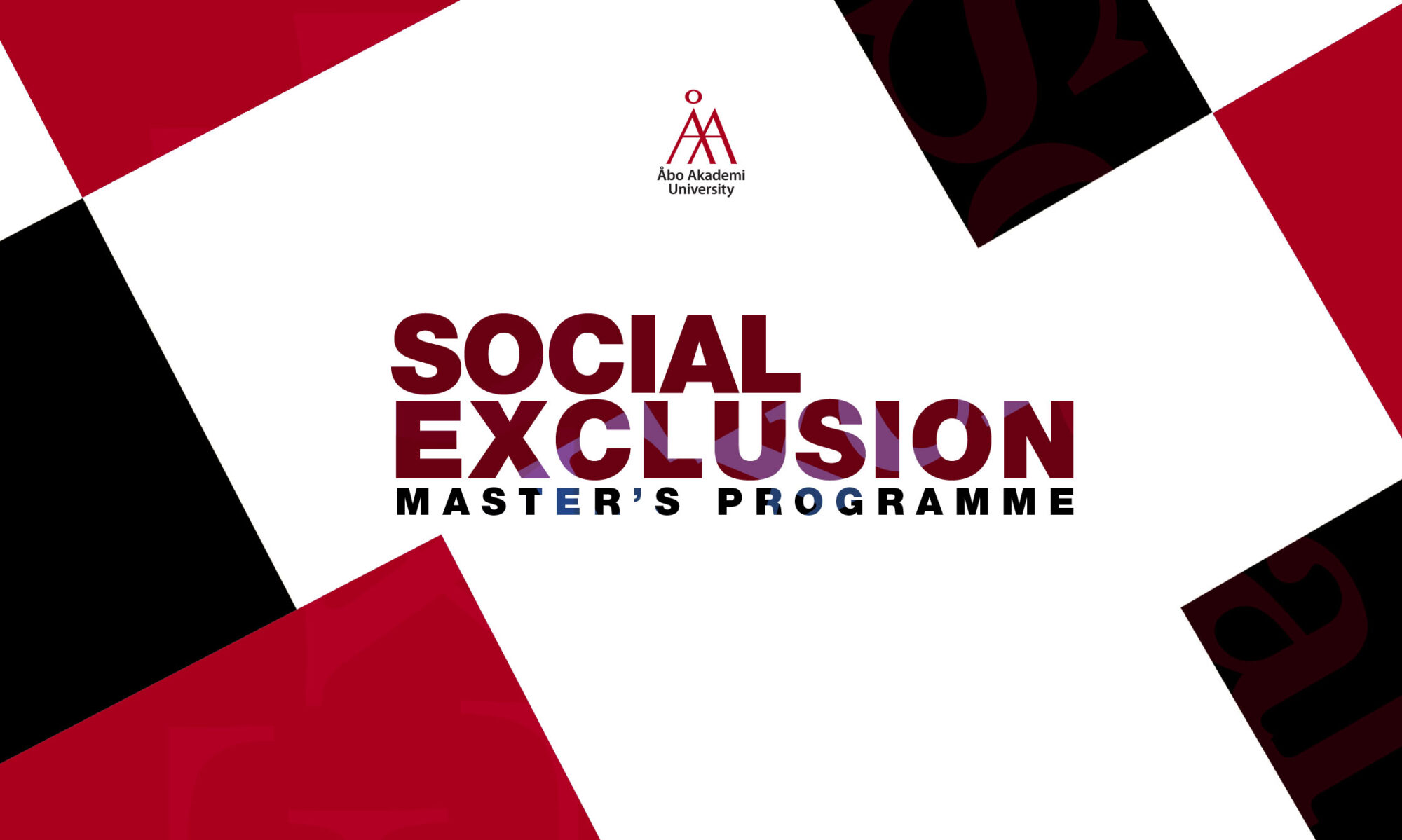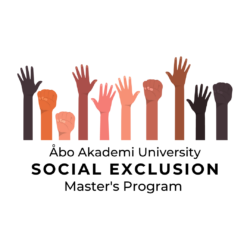Written by Steve Huerta Raygoza

Image from “Mississippi Center for Justice” [1]
Analytical Framework
When addressing topics within the Social Exclusion program, I often attempt to understand them through a historical materialist perspective [2]. Specifically, I try to understand these issues by applying an understanding of the overlying systems that have some use for the labour and resources of the people observed as being socially excluded. I want to establish an analytical framework to show my perspective better. When referring to Social Exclusion, I will be most closely tying it to the definition proposed by Andrew M. Fischer, which describes it as both the process and the outcome of “repulsion or obstruction” that leads people to experience inequality[3]. I will also be abstractly using the term border as, for this case, there are no barriers that can be touched in person or seen on a map. I certainly took some liberties while discussing borders, as many of my classmates discuss tangible borders. Instead, drawing on Anikka Lems’ article Phenomenology of Exclusion, I describe these conceptual borders as being similar to “interior frontiers” that “work to delegate who is allowed in and who is to be [excluded]” and are delegated “by unarticulated and inaccessible conventions.”[4] Additionally, using Lems’ article, I intend to explore the perspectives of the students who experience exclusion and the views of those doing the excluding; in this case, institutions such as the World Bank.
Introduction
I decided to write about how the U.S. University Education System manufactures intangible borders around individuals’ ability to pursue upward mobility. This blog will focus on the policies that work to create said borders, and the next blog will discuss the outcome and consequences of this border creation. To understand how modern higher education within the U.S. makes these conceptual borders, we must first develop an understanding of how this system operates. The premise for these blogs is that the contemporary US higher education model involves:
- The creation of public-private partnerships
- The destruction of subsidized education
- The creation of debt as a mechanism of social control
- The creation of a system to indoctrinate each new generation into the existing social hierarchy
These outcomes are maintained by the exclusionary policies that construct these conceptual borders. I will explore these crucial features over the following two blogs.
The Private Brain Trust of Capital
When discussing the purpose of contemporary U.S. higher education, we must understand the corporate elite’s material interest in university research and how this research is used. I believe that in a functioning society, students would conduct research funded at any given university to better the human condition. Under the U.S. model of higher education, however, the state subsidizes research done at public universities and puts the results of said research in the hands of private corporations. These public-private partnerships create private brain trusts[5] that work to benefit the interest of corporations. Pharmaceutical companies (J&J, Pfizer, Novartis)[6], energy corporations (B.P., Chevron)[7], and the military-industrial complex benefit from research completed at public universities. As such, biochemistry, engineering, and other fields of study become appendages of corporate research. Understanding this dynamic is crucial to understanding the role universities play when maintaining corporate interests; these corporate entities maintain a vested interest in making sure that these universities continue to produce research that helps boost their bottom line. However, this is not the only way capital is created through higher education.
The Decline of Subsidized Education
Often, when discussing education in the U.S. with my mates in the Social Exclusion program, we end up on just how expensive it is to attend college – in this context, I am fortunate enough to have been unfortunate enough. By this, I mean to say that the state of California almost entirely subsidized my bachelor’s degree because my parents fell into a low-income bracket. This was at U.C. Santa Barbara, a Public University. I make the distinction to call it public because, to the surprise of some people I have spoken to during my time in Finland, many universities in the U.S. are privately run. These private universities have seen exponential growth in their attendance over the last few years. According to the National Center for Education Statistics:
“From 2000 to 2010, enrollment in private for-profit institutions increased by 329 percent (from 403,000 to 1.7 million students). In comparison, enrollment increased by 30 percent at public institutions (from 10.5 million to 13.7 million students) and by 20 percent at private nonprofit institutions (from 2.2 million to 2.7 million students) during this period”[8]
What we see here is the result of the ongoing commodification of education. The most unfortunate aspect of this commodification is the massive cost of attending these universities.
Although many students fall into this same income bracket that I did, most students across the U.S. end up having to pay tuition, and the cost of said tuition has been steadily increasing for the last few decades. In 1980, a four-year degree at a public university cost $9,438 on average, adjusted for inflation. In 2019, that cost increased to $23,872.[9] This is undoubtedly a significant increase; however, for private for-profit universities, the average tuition increased from $15,160 in 1988 to $34,740 in 2018.[10] You might be asking how these students manage to pay for such incredibly high tuition. Well, many simply don’t. This is where we see the first conceptual border that works to exclude massive portions of the population. The incredibly high cost of attending a university makes it so that up to 18.6% of college-ready students choose not to participate because they believe it costs too much.[11] This boundary locks out the poorest portions of the population, excluding them from the opportunity to receive higher education and accumulate their wealth.
Because a massive portion of students cannot afford to attend higher education on their own, many choose to rely on accumulating debt. In the next blog, I will discuss this debt accumulation, the exclusionary effects, and the ultimate way that this perpetuates the existing social hierarchy.
Footnotes/Resources:
- Anon. 2021. “HB 1029 Allows Mississippi’s IHL Board to Create New Questionable Student Debt Product.” Mississippi Center for Justice.
- Historical Materialism – A philosophical understanding of political conflict that recognizes material needs as the primary source of friction.
- Fischer, Andrew M. 2011. “Reconceiving Social Exclusion.” Brooks World Poverty Institute 146:1–27.
- Lems, Annika. 2020. “Phenomenology of Exclusion: Capturing the Everyday Thresholds of Belonging.” Social Inclusion 8(4):116–25.
- Brain Trusts – Experts advisors, usually for politicians, that serve as advisors on a given subject
- Bagley, Constance E., and Christina Tvarnoe. 2013. “Pharmaceutical Public-Private Partnerships in the United States and Europe: Moving from the Bench to the Bedside.” Harvard Business Law Review 4:373–401.
- Hofferberth, Matthias. 2011. “The Binding Dynamics of Non-Binding Governance Arrangements. the Voluntary Principles on Security and Human Rights and the Cases of B.P. and Chevron.” Business and Politics 13(4):1–30.
- Anon. 2019. “Undergraduate Enrollment.” National Center for Education Statistics.
- Jackson, Abby. 2015. “This Chart Shows How Quickly College Tuition Has Skyrocketed since 1980.” Business Insider.
- Martin, Emmie. 2017. “Here’s How Much More Expensive It Is for You to Go to College than It Was for Your Parents.” CNBC.
- Seltzer, Rick. 2017. Study Shows How Price Sensitive Students Are in Selecting Colleges.

